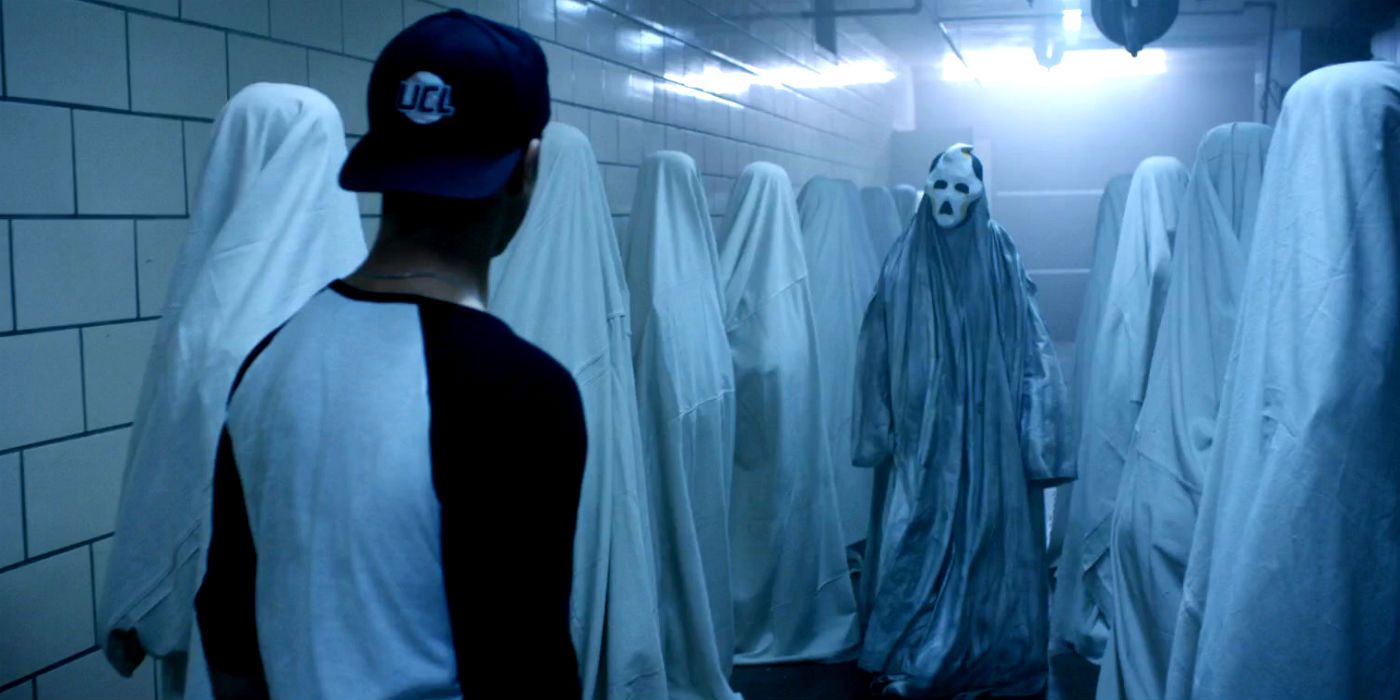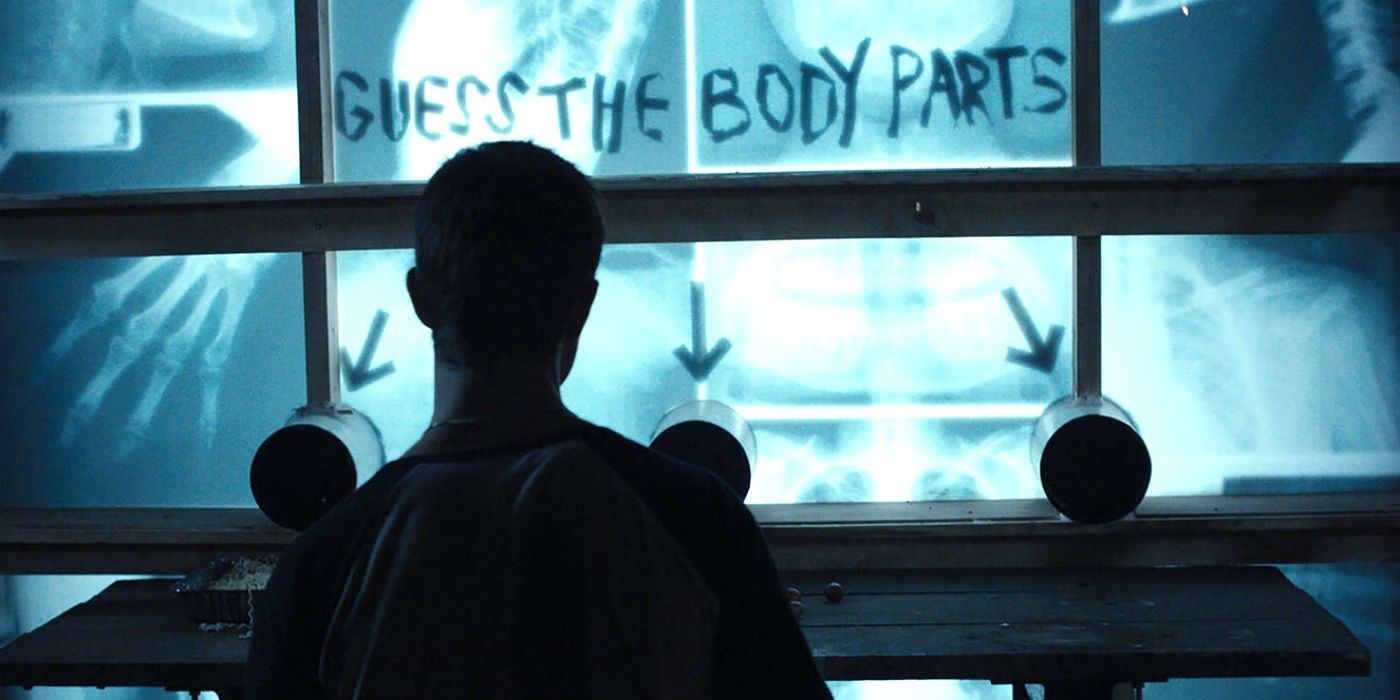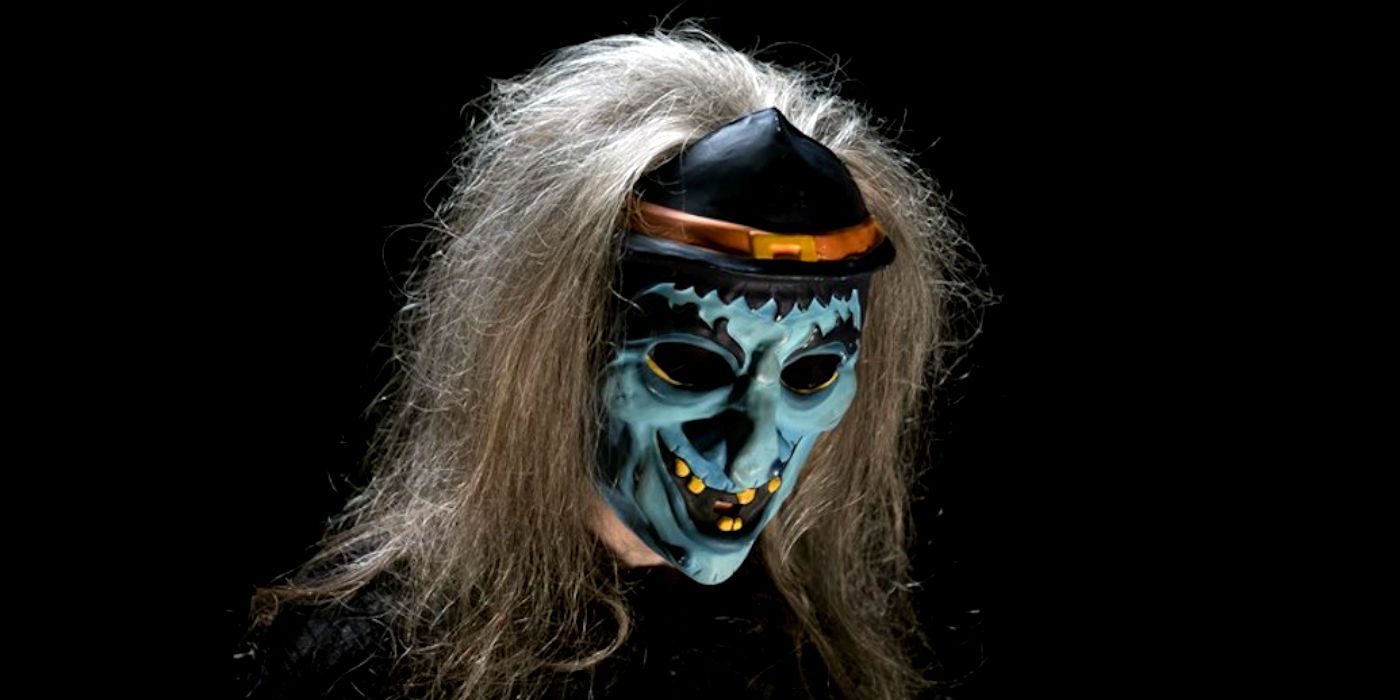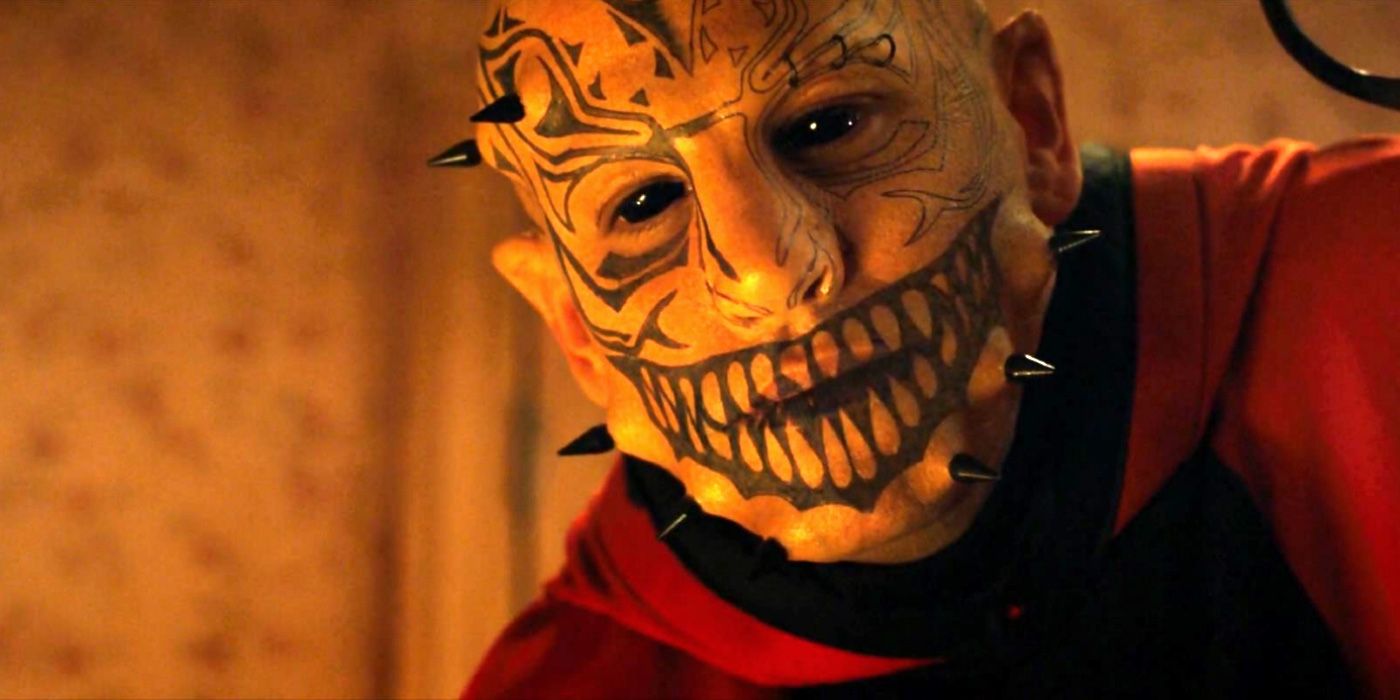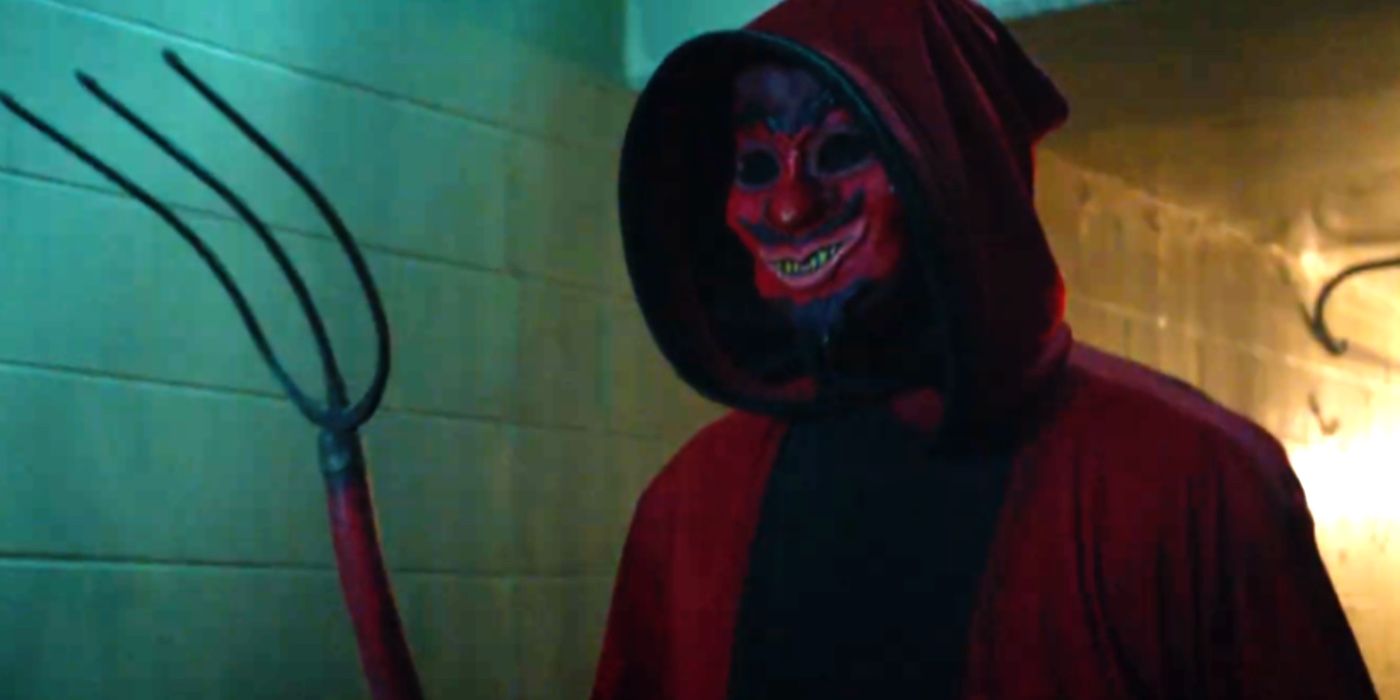Haunt is a 2019 release from Bryan Woods and Scott Beck and producer Eli Roth that explores the darkest side of extreme haunted attractions — here is the Haunt ending explained. The film follows a group of friends on Halloween night who are all looking to attend something unique. They find a flier for an "extreme" haunted attraction and go together. Harper is going through relationship problems with an abusive boyfriend and has endured a traumatic past due to her parents' own marital struggles, where abuse is also implied. She reluctantly attends, under pressure that this sort of event will take her mind away from the situation with her boyfriend.
In one of the best haunted attraction movies, they all are forced to sign a waiver. It is explicit in saying that they may undergo extreme situations and incur bodily harm, but even though this is meant to be a red flag, the majority are skeptical of how dangerous this situation might be and decide it's part of the act. Not soon after they are inside, they witness a real murder right in front of them and later discover that the masked people working inside are all out to kill them. The Haunt ending explained most of the film's events, but here's a rundown of the most important aspects.
Haunt Is A Commentary On Extreme Haunted Attractions
Haunt is not the typical haunted house movie. In the age of extreme haunted attractions being not only sought after, but a common point of discussion, particularly around Halloween, Haunt is a timely look at just how much abuse people are willing to pay to endure at the hands of someone who is supposedly safe. As the Haunt ending explained, the entire point of the film is to put these extreme haunted houses under a lens of scrutiny and provide a "what if" scenario regarding what could happen if these attractions were for real.
Over the years, theme parks, in particular, have taken the haunted house attraction to the extreme, carving out entire events for Halloween. Things like Universal Studios' Halloween Horror Nights or Busch Gardens' Howl O' Scream see hundreds of visitors flock to the parks hoping to be scared by one of the hundreds of scare actors skulking around haunted houses or decked-out-with-a-theme streets. Some of these scare actors even wield chainsaws and chase guests around, showing just how far people are willing to go and how much people are willing to pay for a good scare.
Recent documentaries have explored the phenomenon of trauma survivors and adrenaline junkies wanting to attend these attractions for the rush or for catharsis, and it has been explored in other horror films such as the underrated found-footage series The Houses October Built (2014), its sequel The Houses October Built 2 (2017), and Extremity (2018). As the Haunt ending explained, the reasoning behind why the staff of the attraction have decided to set these elaborate traps for their visitors is unknown until almost the very end, which paves the way for audiences to question their motivations from start to finish.
Ending Explained & Who Are Behind The Masks?
After most of her friends are dead, the Haunt ending explained that Harper starts to pick off the killers one by one, along with Nathan, who she only just recently met before they arrived. At one point, her boyfriend ends up using GPS to track her and ends up heading toward the attraction, but he is quickly picked off by the killers before he can save her. Nathan and Harper seem like they may be headed toward a budding relationship, though the outcome on this is never revealed.
As the Haunt ending explained, the big twist is revealed when Nathan and Harper capture the worker who is wearing a vampire mask, and he tells them that the reason why they do what they do is because they are part of a cult. The vampire says that the cult believes that they must make themselves into monsters underneath the masks and derive pleasure from tearing other people's faces off. Earlier in the film, "Mitch," the staff member wearing the ghost mask, takes it off and shows that his face has been mutilated to match the mask's exterior.
As more of the killers' true faces are revealed in one of the creepiest movies about cults, some are unmasked or shown unmasked, and the audience can see that they have all tried to emulate the masks they wear, almost as if they want to become whatever avatar they portray inside the house. The Haunt ending explained that Harper escapes the attraction, and it is subsequently burned to the ground by traps that have been set in place to destroy the structure and all the evidence by the man in the clown mask.
Recalling that they had to give up their phones before entry and wrote their home addresses on the waiver sheet, Harper realizes that the man in the clown mask would be able to track her location and follow her home. The Haunt ending explained that the man in the clown mask arrives at Harper's home only to find that she has set a trap for him much like the ones they endured in the attraction. She shoots him with a shotgun, and he dies, but it's unclear as to whether these members of the cult are the only ones out there or if any others survived.
The Haunt 2019 Directors Kept The Killers Identity Mysterious Deliberately
One of the things that makes Haunt a unique entry to the horror genre is that the identity of the killers, besides the fact that they are part of a cult, are left a mystery at the end. According to an interview with ScreenAnarchy, directors Scott Beck and Bryan Woods did this intentionally. Both Woods and Beck were asked if they had a background in mind for the villains that the movie didn't share, or if it was meant to be left up to the imagination. Woods compared Haunt to his film A Quiet Place, stating that he prefers audience participation when it comes to working out the larger mysteries.
That being said, Woods also got direction from horror movie producer Eli Roth, who stated that villains having a backstory was integral to the production. Roth stressed that even if audiences weren't let in on the backstory itself, it still needed to be a part of the overall film. While the Haunt ending explained little of the villain's backstory, outside of being in a cult, this adds to the overall film, rather than detracts from it, with Woods stating, "We have always watched out backstories of villains, perhaps that could be part of another Haunt movie; but we also love the mystery, we love embracing the mystery of it."
Eli Roth Was A Pivotal Influence For Haunt
Producer Eli Roth (Inglourious Basterds) had a heavy influence on Haunt's overall production, as proven by the aforementioned interview with Bryan Woods and Scott Beck. According to Beck, Roth had come on board the production shortly after the early draft of the script had been prepared. The producer had been on the hunt for a haunted house-themed movie to get his name on when he found and settled on Haunt after enjoying the script. Beck recalls that Roth was a major guiding presence throughout the process, stating that the producer was generous with his knowledge of what made a good horror flick, and what made a bad one.
The Haunt ending explained little of the villain's backstory, but as previously mentioned, the fact that they even had one at all was Eli Roth's doing. Between Hostel and Cabin Fever, producer Eli Roth clearly knows what needs to be done to make one of the scariest horror movies, and Beck and Woods were more than happy to let the producer take the reins when necessary and guide Haunt into becoming as good as it did. When asked about working with Roth, Beck concluded, "He was a wonderful ally to have throughout the film."

